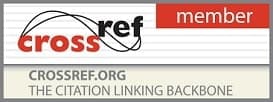2020, Vol. 3, Issue 2, Part A
A prospective study on growth pattern and effect of serum ferritin, haemoglobin levels on physical growth inthalassemic childern
Author(s)
Dr. Bushra Nasreen
Dr. Bushra Nasreen
Abstract
Background: Thalassemia major is one of the most common genetically transmitted diseases in the world and is associated with reduced synthesis of structurally normal hemoglobin. -thalassemia is an autosomal recessive single gene disorder. Keeping this in mind, present study was undertaken to study the growth pattern of transfusion dependent thalassaemic children and to assess the effect serum ferritin, haemoglobin levels on physical growth pattern in thalassemic children. Methods: A prospective observational study was done on 52 thalassaemic patients (aged 2 years-12 years) who attended Department of Pediatrics. Anthropometric measurements like weight and height were taken from all patients. Sexual maturity rating was done in girls 10 years and boys11 years. Lab parameters included pre-transfusion hemoglobin (Hb) and serum ferritin. Percentiles for weight, height and body mass index were calculated using WHO (2007) reference data. Results: Among 52 transfusion dependent thalassemic children majority i.e. 35(67.3%) were more than 6years.Mean age was 8 3.05. Majority of children i.e. 32(61.6%) were male. Mean age of diagnosis was 9.2 months, youngest case being diagnosed at 3rd month, and oldest being at 20 months. Among 52 children most of them are born to non-consanguineous couple. Majority of the children had pre-transfusion haemoglobin in the range of 5-7 gm%. Among 52 children 61.6 % (n=32) had mean serum ferritin more than 2500, and 38.4% (n=20) had mean serum ferritin value less than 2500. The present results showed that, Among 52 children according to IAP standards weight for age less than 50th percentile was 86.5% (n=45) and more than 50th percentile was 13.5%(n=7). Among 45(86.5%) children who had less than 50th percentile weight for age, 19.2 % (n=10) children were less than 6 years of age, remaining 67.3% (n=35) children belongs to 7 to 12 years of age. Among weight for age <50th percentile children, 82.2% of children had mean pre transfusion haemoglobin<7gm%. Among height for age <50th percentile children, 91.1% of children had mean pre transfusion haemoglobin<7gm%. In the present study we found that, Among weight for age <50th percentile children, 75.5% of children had mean serum ferritin >25oong/ml. Among height for age <50th percentile children, 76.4% of children had mean serum ferritin >2500ng/ml. Conclusions: Regular blood transfusion with growth monitoring and appropriate iron chelation (Sr. Ferritin >1000 ng/ml) is of utmost importance in transfusion dependent thalassaemic children.
Background: Thalassemia major is one of the most common genetically transmitted diseases in the world and is associated with reduced synthesis of structurally normal hemoglobin. -thalassemia is an autosomal recessive single gene disorder. Keeping this in mind, present study was undertaken to study the growth pattern of transfusion dependent thalassaemic children and to assess the effect serum ferritin, haemoglobin levels on physical growth pattern in thalassemic children. Methods: A prospective observational study was done on 52 thalassaemic patients (aged 2 years-12 years) who attended Department of Pediatrics. Anthropometric measurements like weight and height were taken from all patients. Sexual maturity rating was done in girls 10 years and boys11 years. Lab parameters included pre-transfusion hemoglobin (Hb) and serum ferritin. Percentiles for weight, height and body mass index were calculated using WHO (2007) reference data. Results: Among 52 transfusion dependent thalassemic children majority i.e. 35(67.3%) were more than 6years.Mean age was 8 3.05. Majority of children i.e. 32(61.6%) were male. Mean age of diagnosis was 9.2 months, youngest case being diagnosed at 3rd month, and oldest being at 20 months. Among 52 children most of them are born to non-consanguineous couple. Majority of the children had pre-transfusion haemoglobin in the range of 5-7 gm%. Among 52 children 61.6 % (n=32) had mean serum ferritin more than 2500, and 38.4% (n=20) had mean serum ferritin value less than 2500. The present results showed that, Among 52 children according to IAP standards weight for age less than 50th percentile was 86.5% (n=45) and more than 50th percentile was 13.5%(n=7). Among 45(86.5%) children who had less than 50th percentile weight for age, 19.2 % (n=10) children were less than 6 years of age, remaining 67.3% (n=35) children belongs to 7 to 12 years of age. Among weight for age <50th percentile children, 82.2% of children had mean pre transfusion haemoglobin<7gm%. Among height for age <50th percentile children, 91.1% of children had mean pre transfusion haemoglobin<7gm%. In the present study we found that, Among weight for age <50th percentile children, 75.5% of children had mean serum ferritin >25oong/ml. Among height for age <50th percentile children, 76.4% of children had mean serum ferritin >2500ng/ml. Conclusions: Regular blood transfusion with growth monitoring and appropriate iron chelation (Sr. Ferritin >1000 ng/ml) is of utmost importance in transfusion dependent thalassaemic children.
Pages: 01-06 | Views: 1913 | Downloads: 980

How to cite this article:
Dr. Bushra Nasreen. A prospective study on growth pattern and effect of serum ferritin, haemoglobin levels on physical growth inthalassemic childern. Int J Paediatrics Geriatrics 2020;3(2):01-06. DOI: 10.33545/26643685.2020.v3.i2a.80






